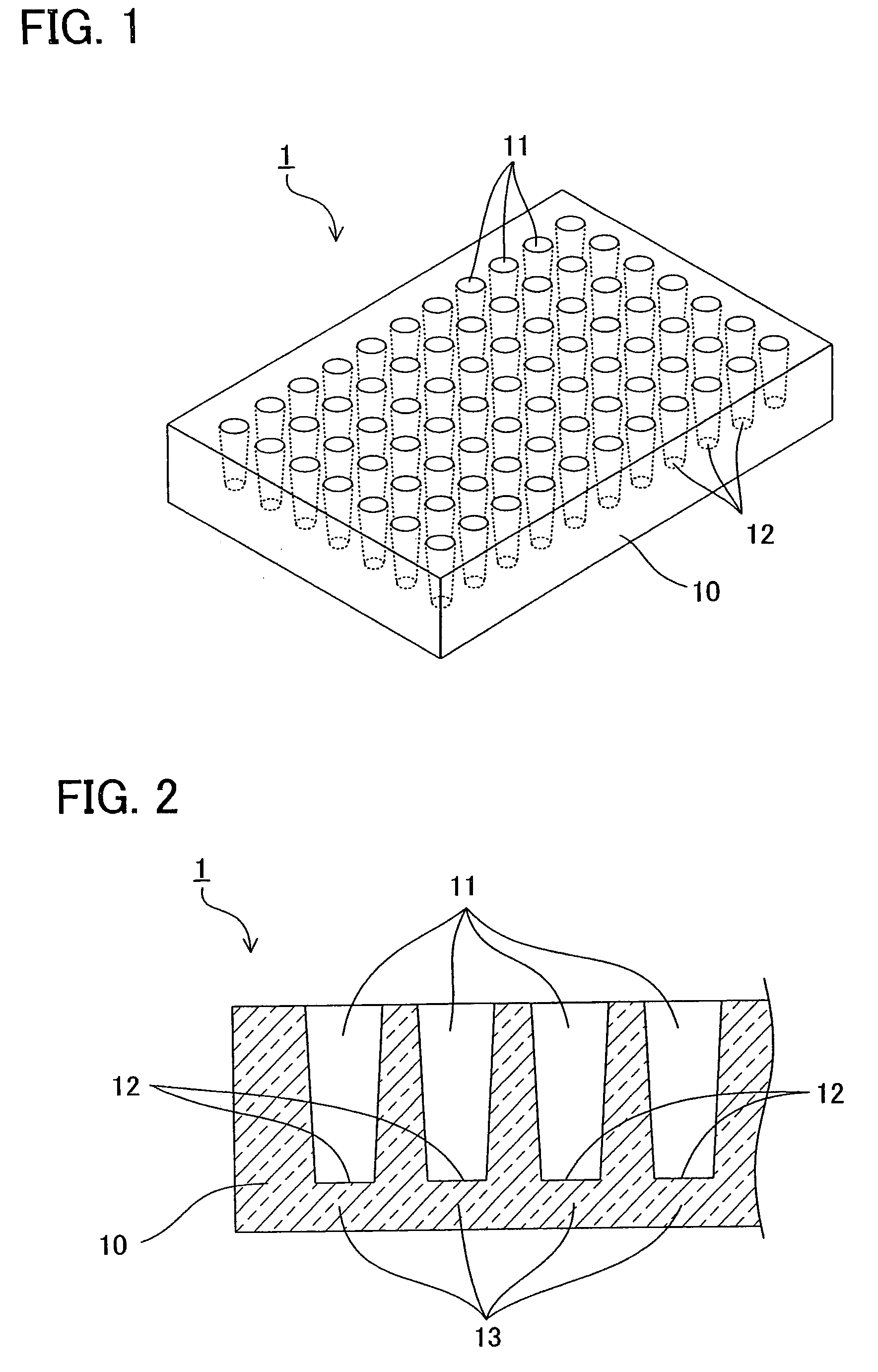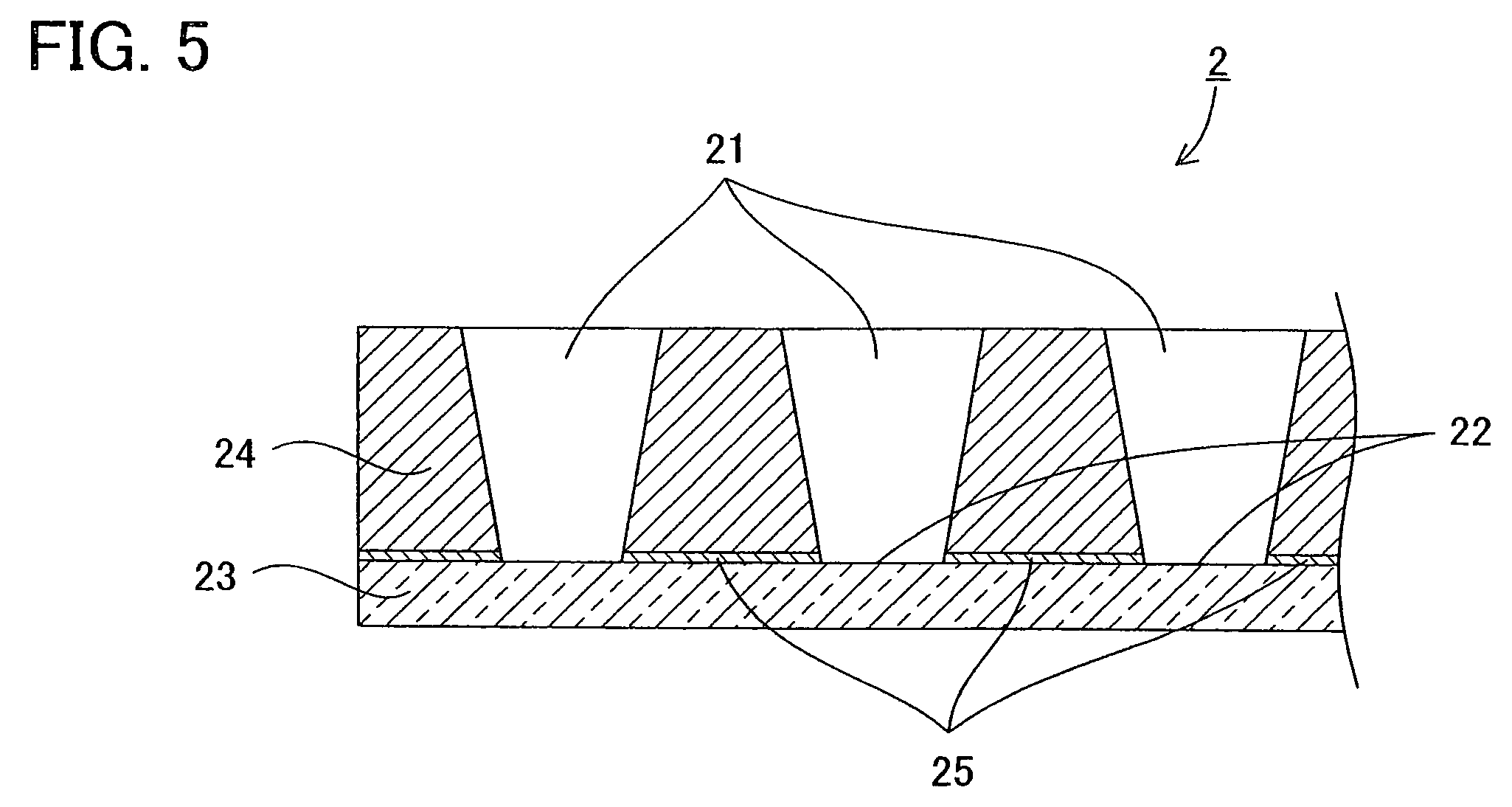Ultraviolet ray transmitting glass composition and glass article making use of the same
a technology of ultraviolet ray and glass, which is applied in the field of ultraviolet ray transmitting glass composition, can solve the problems of increasing reducing the ultraviolet ray transmittance of synthetic resin, and insufficient resistance of resin to organic solvents, etc., and achieves increase the load on the environment, and high ultraviolet ray transmittance
- Summary
- Abstract
- Description
- Claims
- Application Information
AI Technical Summary
Benefits of technology
Problems solved by technology
Method used
Image
Examples
example 9
[0141]A glass composition in Example 9 was the same as that in Example 3, but a melting condition in fabricating a glass sample of Example 9 was changed from that of Example 3.
[0142]The glass sample of Example 9 was fabricated in the same manner as the above-mentioned Examples 1 to 8, except that the temperature in melting and refining a batch was set at 1550° C. The ultraviolet ray transmittance, the thermal expansion coefficient, the glass transition temperature, the devitrification temperature, the melting temperature and the working temperature were measured in the same manner as in Examples 1 to 8. These measurement results are shown in Table 1.
[0143]The thermal expansion coefficient, the glass transition temperature, the devitrification temperature, the melting temperature and the working temperature of Example 9 were the same as those of Example 3. The ultraviolet ray transmittance of Example 9, however, was 5% less than that of Example 3.
[0144]It has been known that when a p...
PUM
| Property | Measurement | Unit |
|---|---|---|
| thickness | aaaaa | aaaaa |
| thickness | aaaaa | aaaaa |
| ultraviolet ray transmittance | aaaaa | aaaaa |
Abstract
Description
Claims
Application Information
 Login to view more
Login to view more - R&D Engineer
- R&D Manager
- IP Professional
- Industry Leading Data Capabilities
- Powerful AI technology
- Patent DNA Extraction
Browse by: Latest US Patents, China's latest patents, Technical Efficacy Thesaurus, Application Domain, Technology Topic.
© 2024 PatSnap. All rights reserved.Legal|Privacy policy|Modern Slavery Act Transparency Statement|Sitemap



